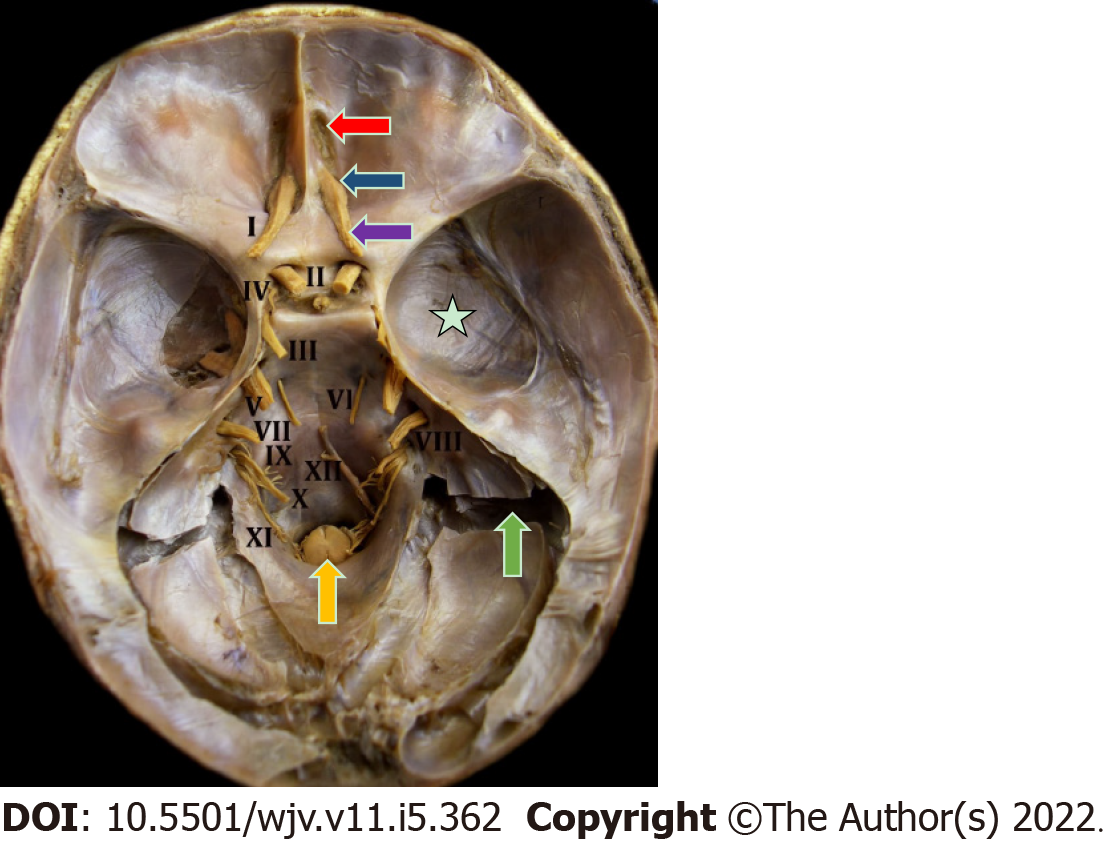Copyright
©The Author(s) 2022.
World J Virol. Sep 25, 2022; 11(5): 362-374
Published online Sep 25, 2022. doi: 10.5501/wjv.v11.i5.362
Published online Sep 25, 2022. doi: 10.5501/wjv.v11.i5.362
Figure 3 Endocranial view of the 12 pairs of cranial nerves in a natural anatomical piece.
I: Olfactory nerve; II: Optic nerve; III: Oculomotor nerve; IV: Trochlear nerve; V: Trigeminal nerve; VI: Abducens nerve; VII: Facial and intermediate nerve; VIII: Vestibulocochlear nerve; IX: Glossopharyngeal nerve; X: Vagus nerve; XI: Accessory nerve; XII: Hypoglossal nerve. Red arrow indicates the cribriform plate of the ethmoid bone; blue arrow indicates the olfactory bulb; purple arrow indicates the olfactory tract; yellow arrow indicates the beginning of the spinal cord at the level of the foramen magnum; green arrow indicates the sigmoid sinus; white star indicates the cranial dura mater.
- Citation: Vigliar MFR, Pomini KT, Buchaim DV, Buchaim RL. Anatomophysiological relationships and clinical considerations of taste and smell loss in patients with COVID-19. World J Virol 2022; 11(5): 362-374
- URL: https://www.wjgnet.com/2220-3249/full/v11/i5/362.htm
- DOI: https://dx.doi.org/10.5501/wjv.v11.i5.362









